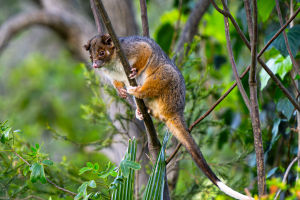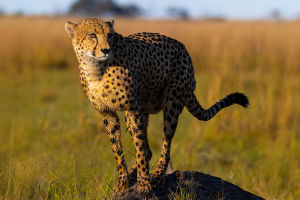Lykkers, imagine enduring temperatures that freeze water or sand so hot it scorches skin.
On every continent, a cast of extremophiles defies logic, thriving where most life would perish.
Their astonishing adaptations—molecular tricks, behavioral feats, physiological marvels—offer a masterclass in survival. Ready to explore nature's most daring specialists? Prepare to marvel at creatures that rewrite the rulebook of what's possible on Earth.
Polar Masters
Along the barren shores of Antarctica, the majestic Emperor Penguin (Aptenodytes forsteri) endures temperatures as low as –40 °F.
In colonies of up to 20,000 birds, they form massive "huddle spheres," rotating positions so no individual freezes. Their streamlined bodies and a layer of dense blubber reduce heat loss, while specialized feathers trap insulating air.
During breeding season, males incubate single eggs on their feet beneath feathered skin, fasting for up to 115 days in gale‑force winds.
Freezing Frogs
In North America's chilly woodlands, the unassuming Wood Frog (Lithobates sylvaticus) performs a winter miracle. As autumn nights dip below freezing, these frogs flood blood and tissues with glucose, acting as an internal antifreeze.
Ice forms only in body cavities, not inside cells, halting heartbeats and breathing. Buried under leaf litter, they remain in suspended animation for months, then thaw and hop away with spring's first warm rays—a literal resurrection that defies life’s coldest limits.
Ice‑Proof Beetles
Beneath the bark of northern conifers, the tiny Flat Bark Beetle braves temperatures down to –58 °F. By reducing body water and producing ice‑binding proteins, it prevents lethal ice crystal formation inside cells.
This molecular allows its tissues to resist freeze damage, ensuring normal function returns at thaw. Though just a few millimeters long, its biochemical defenses rival cutting‑edge laboratory antifreeze, showcasing evolutionary ingenuity in the face of subzero peril.
Desert Titans
Across the blazing sands of the Arabian Desert, the iconic Dromedary Camel (Camelus dromedarius) reigns supreme.
Able to tolerate body temperature swings from 100 °F to 106 °F, it minimizes water loss by concentrating and producing dry feces. It convertible to both energy and metabolic water, allowing a week or more without drinking. Nostrils close to trap moisture, and thick fur reflects sunlight by day while insulating against nighttime chill.
Speedy Ants
On the Sahara's scorching surface—where ground temperatures can exceed 140 °F—the nimble Sahara Desert Ant (Cataglyphis bicolor) operates at record speed. Lengthy legs elevate its tiny body away from blistering sand, cutting heat transfer.
Using polarized light from the sky and an internal step‑counting system, scouts venture over 100 feet in search of insects, returning home before lethal heat arrives. Their precision navigation and sprinting prowess epitomize behavioral adaptation to extreme thermal stress.
Burrowed Rodents
In desert regions stretching from Mongolia to northern Africa, the long‑eared Jerboa hops through life on oversized hind legs.
By daytime, it shelters in deep burrows—sometimes six feet underground—where temperatures hover near a comfortable 77 °F. Nocturnal foraging under moonlight avoids daytime inferno, while oversized ears dissipate heat.
This mix of nocturnal behavior and specialized anatomy highlights how timing and morphologies combine to outsmart desert extremes.
Undersea Extremes
Thousands of feet below the ocean's surface, hydrothermal vents spew mineral‑rich water at nearly 750 °F. Clinging to the vent chimneys, the pearly Pompeii Worm (Alvinella pompejana) thrives where few dare.
Its back is carpeted in heat‑loving bacteria that detoxify chemicals and may insulate against scalding fluid. Meanwhile, its head enjoys cooler currents. This dual‑temperature lifestyle, supported by symbiosis, pushes physiological boundaries and illuminates life's potential beyond familiar habitats.
Adaptive Lessons
From molecular antifreezes to behavioral thermoregulation, these species showcase innovation at every level. Scientists draw inspiration from their cryoprotectants to improve preservation. Engineers mimic camel physiology for water‑efficient systems.
Robotics researchers study ant navigation for autonomous vehicles. Each adaptation sparks potential breakthroughs across disciplines, proving that evolutionary solutions can guide human ingenuity in medicine, technology, and beyond.
Reflective Close
Witnessing these extreme survivors—Lykkers—invites reflection on resilience and creativity. In a world facing rapid environmental shifts, lessons from penguins, frogs, beetles, camels, ants, jerboas, and worms remind us that adaptability unlocks survival.
May their extraordinary tales inspire real‑world innovation and fuel a deeper appreciation for nature's boundless capacity to overcome life's harshest challenges.


